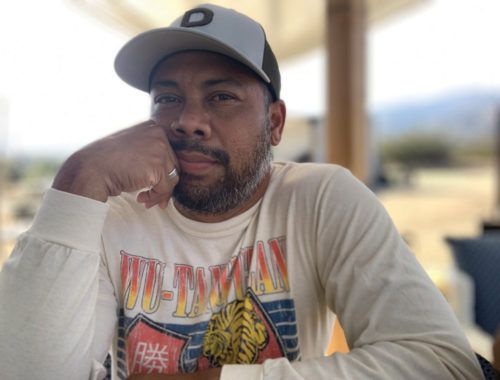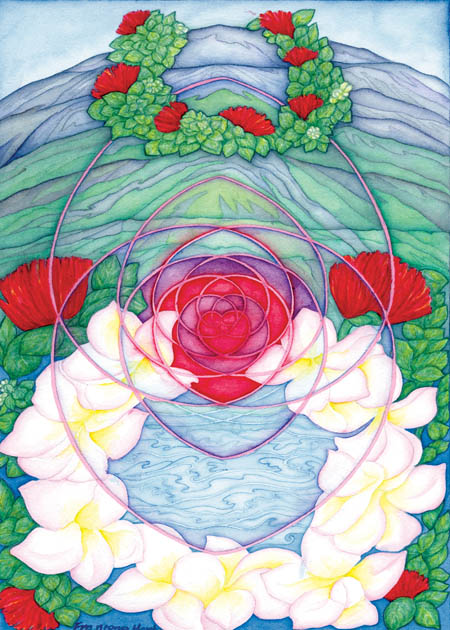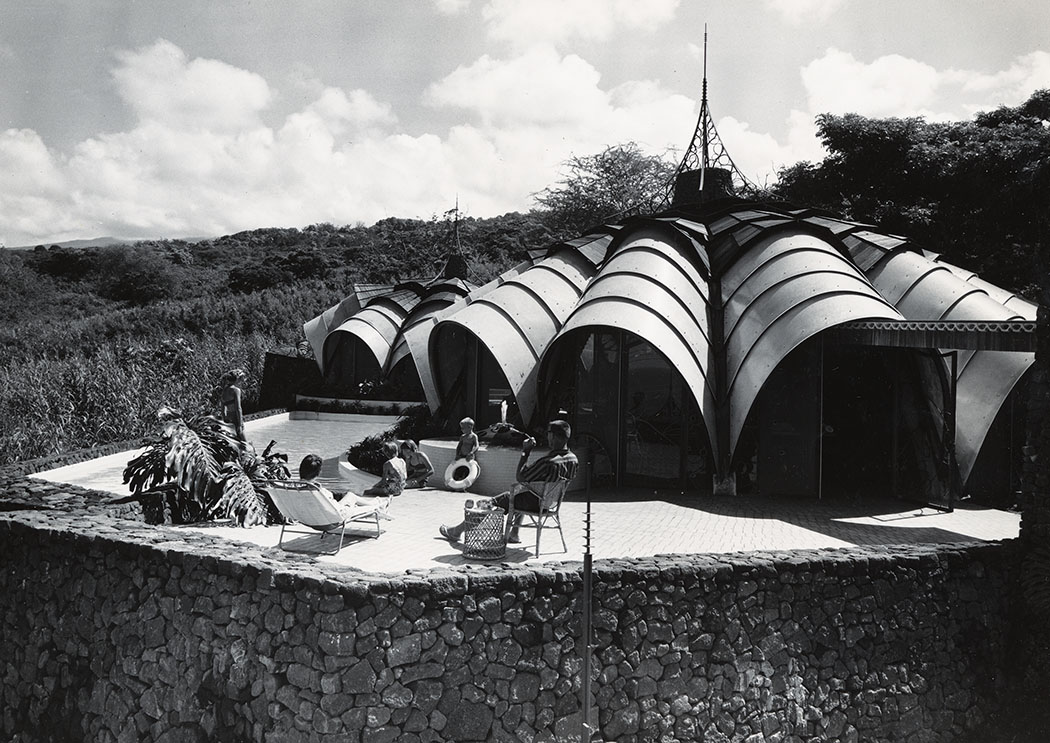
Kona’s Onion House: The Sydney Opera House Meets Stonehenge
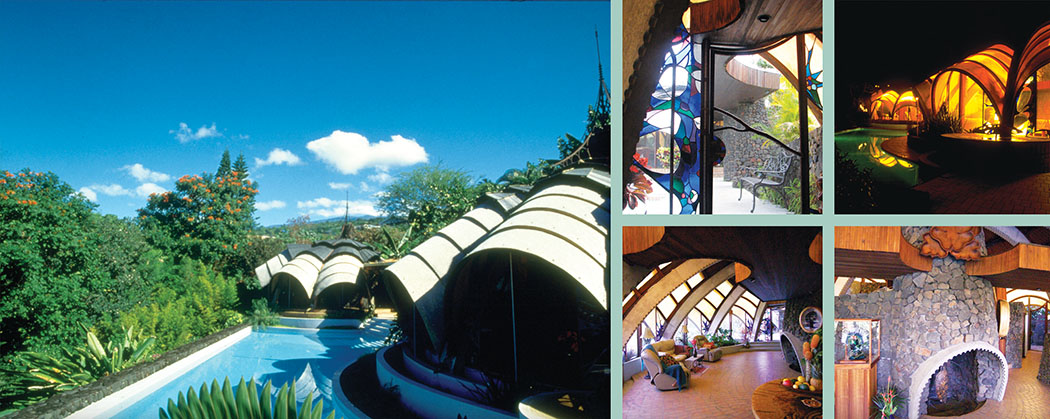 By Barbara Fahs
By Barbara Fahs
They said it couldn’t be built. Later, they said it couldn’t be repaired.
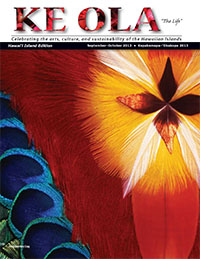
Yet the Onion House stands proudly today in South Kona as a living work of art and innovative architecture.
Thanks to the vision of two people—owner Elizabeth von Beck and architect Kendrick Bangs Kellogg—this one-of-a-kind structure began in 1959, when Elizabeth commissioned Kellogg to build her a home in a sleepy little fishing village along the Kona coast. The niece of the founder of the McCormick Spice Company, Elizabeth was determined to create an enduring work of art influenced by Polynesian culture.
Elizabeth’s love of the Pacific Ocean and its people was almost inborn. In 1887, her father sailed with the first scientific expedition to map and study Easter Island (Rapa Nui). The sea captain later shared his adventures in this faraway, exotic land with his daughter, who always felt an affinity with the Pacific islands.

The Long Road to Completion
Ken Kellogg was not yet 30 when Elizabeth contacted him after admiring a house he designed in San Diego that was inspired by his mentor Frank Lloyd Wright. The Onion House was Ken’s third project.
“Ken was an idealistic, young visionary, who wanted to create original living spaces in harmony with the natural environment,” Elizabeth’s niece, Beth McCormick explained. “My Aunt Elizabeth needed to live in a piece of art, and she saw in Ken the ability to create what she wanted.”
The Onion House represented Kellogg’s creative breakaway from Lloyd Wright. Although the famous architect’s influence exists in both feeling and construction, Kellogg expressed his own separate vision in designing and creating the Onion House. Kellogg called it the “House of Shells,” and today, many people comment that it reminds them of the iconic opera house in Sydney, Australia. Because of its extensive rock work the April 1991 issue of Hawaiian Island Home, described the Onion House as “the Sydney Opera House meets Stonehenge.”
When Kellogg presented Elizabeth with his original blueprint, she was completely entranced and told him on the spot to build it. No contractors would touch the unusual project, claiming it could not be done because it had so many unorthodox features, including a lack of right angles. So Kellogg decided to build it himself. He moved his young family to Hawai‘i Island and lived there for two years while undertaking this seemingly impossible project.
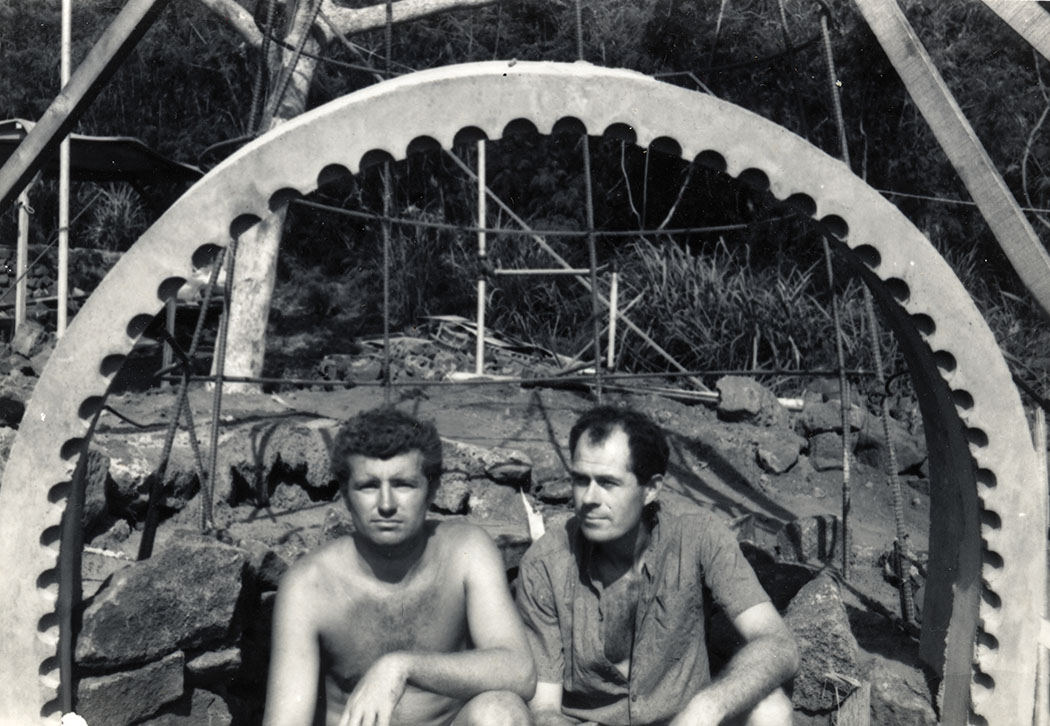
After purchasing the essential materials he needed— a pickup truck, a cement mixer, a shovel, and a wheelbarrow—he embarked on the ambitious project. He used as many local materials as possible, such as lava rock and koa wood. He needed to order other materials, such as Italian tile, redwood, and even plumbing fixtures, from the faraway mainland—and they had to be transported by ship.
Beth recalled, “Both Ken and Elizabeth were pushing the envelope, far beyond the levels of what anybody was comfortable with, in order to prove what was doable.”
Kellogg recruited fellow San Diegan, architect, and metal smith, Bill Slatton, to design and construct the Onion House’s ornate ironwork, including the spires that grace both the main house and the separate master bedroom. Slatton also fashioned several sculptures and the ornate gate at the Onion House entry. He had created ironwork at Frank Lloyd Wright’s winter home, Taliesin West, in Scottsdale, Arizona, from 1956 until 1959, so the Onion House benefited from two craftsmen who were strongly influenced by the legendary architect.
Beth recounted, “Bill was Ken Kellogg’s right hand during the entire two-year construction project.”
Stained glass artist James Hubbell soon joined the team to create the many highly colorful, creative, distinctive panels, which, remarkably, have remained mostly intact to this day.
Beth praised both Hubbell and Kellogg by saying, “Both visionaries went on to create completely original lifetime bodies of work.”
They both helped to originate a movement known today as Organic Architecture, which promotes the creation of buildings that are harmonious with nature.

Beth elaborates, “There is nothing square in the entire place. Each door is a different shape from any other door. The arches are not equal. Even the roof shingles are all different shapes! Today, it takes special craftspeople to maintain it because nothing in the house is a standard size or shape.”
By 1963, the home was complete, and not without controversy.
Beth wrote, “To the neighbors, it was as bizarre as if Elizabeth built a space shuttle.”
One neighbor remarked, “The damned thing looks like an onion!”
Instead of taking offense, Elizabeth loved the concept and adopted the name “Onion House” for her beloved home.
“It was an appropriate name on several levels,” Beth added. “Not only did it look like an onion, but the McCormick Spice Company had made powdered onion as one of their early products. My aunt was an innovator who was way ahead of her time.”
Making the Property a Work of Art
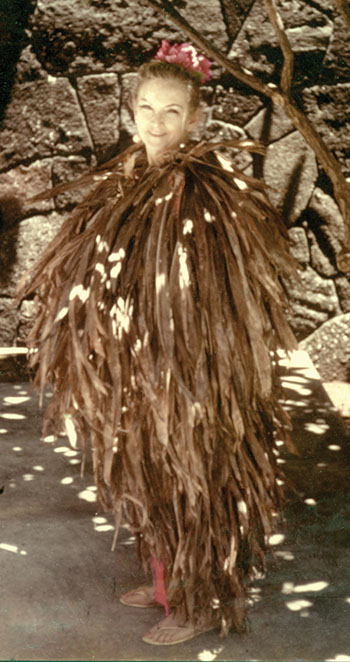
Elizabeth’s vision for her home extended far beyond architecture. She was intent to grow some of her own food and planted mango trees as a starter crop because she firmly believed that Hawai‘i needed to become self-sufficient in food production. As the years went by, she planted other food crops such as jaboticaba, soursop, and pomelo, as well as ornamentals such as jacaranda, snow-on-the-mountain, and palms. Some of her original plantings remain to this day and adorn the one-acre property on which the Onion House is located.
Elizabeth lived in the Onion House for 20 years and entertained the likes of the queen of Tonga, according to local legend. “I can’t confirm that this is true,” chuckled Beth. Elizabeth held frequent parties; the first, her housewarming party, lasted three days and three nights, with all of Kona invited.
Her love of the Polynesian people and culture extended to her many friends, including ‘Iolani Luahine, a famous hula dancer who lived at Hulihe‘e Palace, the royal residence of Hawaiian monarchs in Kailua town. Beth recalled, “Aunty ‘Iolani was a tiny, ever-mischievous dark-skinned sprite with eyes that shot fire, who would always greet us with elaborate ritual, even if we happened to see her at the post office. It was only much later that I understood that Aunty ‘Iolani Luahine was held in a sort of reverence among Hawaiian practitioners.”
Ruin and Repair
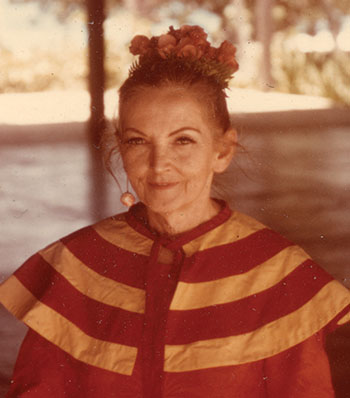
Over time, Elizabeth was unable to maintain the Onion House and its grounds. Even as the jungle began to reclaim the estate, Elizabeth and Aunty ‘Iolani Luahine frolicked through it, according to Beth.
“It was like a ruined Mayan temple overtaken by the rainforest—the Onion House was draped in climbing vines and foliage that masked its distinctive arches. Whatever mixture of caprice and acumen that inspired my Aunty Elizabeth to build and bankroll this extraordinary home did not include the work of maintaining it.”
Maintenance was not in Elizabeth’s vocabulary, it seems. Beth also recalls her aunt’s car, a red Mercedes Benz 350 SEL. Elizabeth was a tiny woman, unable to see over the steering wheel. Beth added, “She peered out a narrow arched portal underneath the steering wheel, so from the outside, only the top of her head, wearing a large cluster of hibiscus flowers, was barely visible. Crusted in a layer of brown dust, its paint color unrecognizable, the Benz would cruise by with apparently nobody driving!”
Elizabeth neglected to change the oil, so in time the car simply gave up the ghost.
The Onion House suffered from the same neglect, and the jungle threatened to take it over by the time the bank was ready to foreclose in 1984.
Like a Phoenix From the Ashes
Because her aunt and the Onion House meant so much to Beth and both had greatly influenced her life, she stepped in and purchased it within weeks of the foreclosure.
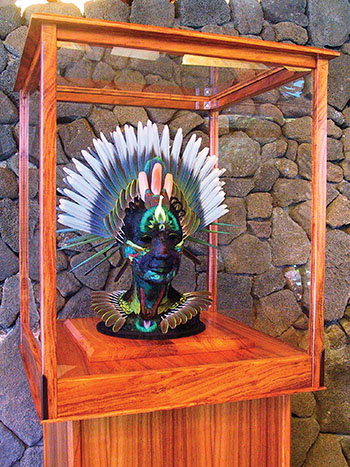
“I was only 30,” Beth explained. “I didn’t know how I was going to handle it because it was the first home I’d ever owned. My aunt, in a personal decline that mirrored her surroundings, came with the deal.” Beth took care of Elizabeth the final three years of her life, and the world lost her in 1987 to cancer.
Beth was becoming a respected artist, creating unique featherwork, sometimes in combination with sculpture. For 16 years, she made the Onion House her home, and little by little, transformed it while also creating her masterful works of feather art.
“The house has its own life story,” Beth related. “It gets better all the time. A friend once told me that this house shows her the potentials in this life, that it embodies a sense of what is actually possible. I’ve decided that art is something you live.”
Beth found that it was necessary to meticulously study every small detail in the house and tend to each of them individually. For example, the roof was made of a fiberglass material called Alsynite and certainly did not present a typical roofing job for a standard roofing company to undertake.
“We decided to treat the roof as if it were a surfboard,” explained Beth. “During the restoration, we had it re-fiberglassed in much the same way you would refinish a surfboard.”
In 2000, after 16 years, Beth completed restoring the Onion House. As her life took new directions, she began sharing her home with the world after carefully selecting competent caretakers.
“The house has its own life force,” she reflected. “My work of stewarding the Onion House is a tribute to the sense of flamboyant joy that inspired its creation.”
The Onion House Today

In the same spirit that Elizabeth von Beck created the Onion House as a tribute to her passion for Hawaiian culture and as a joyful gathering place, it exists today as a living museum where vacationing art lovers and lovers of all kinds come to stay. The many guests who have made the Onion House their temporary home have given rave reviews of their time and experience at this unique dwelling.
One guest from Colorado shared his impression by stating, “I’ve never experienced a place that, day after day, made ALL of me feel so fine! This place is an oasis of Zen!”
The Onion House inspires creativity in those who stay there, including Beth McCormick, whose feather work was greatly shaped by her years living at the Onion House. A recent guest went so far as to recreate a model of the Onion House when she got home using seashells, stained glass, and volcanic rock walls. She said, “Nothing in this world truly prepared me for my first impression of the real thing. My camera clicked at each new image: step, wall, artwork, room, and so forth. The only negative thing I can say about staying at your home is that the four of us NEVER wanted to leave, and I was dragged kicking and screaming to see Hapuna Beach and the Hawai‘i Volcanoes National Park!” ❖
Contact Beth McCormick: OnionHouseHawaii.com
Contact writer Barbara Fahs: hiiakas@lava.net
